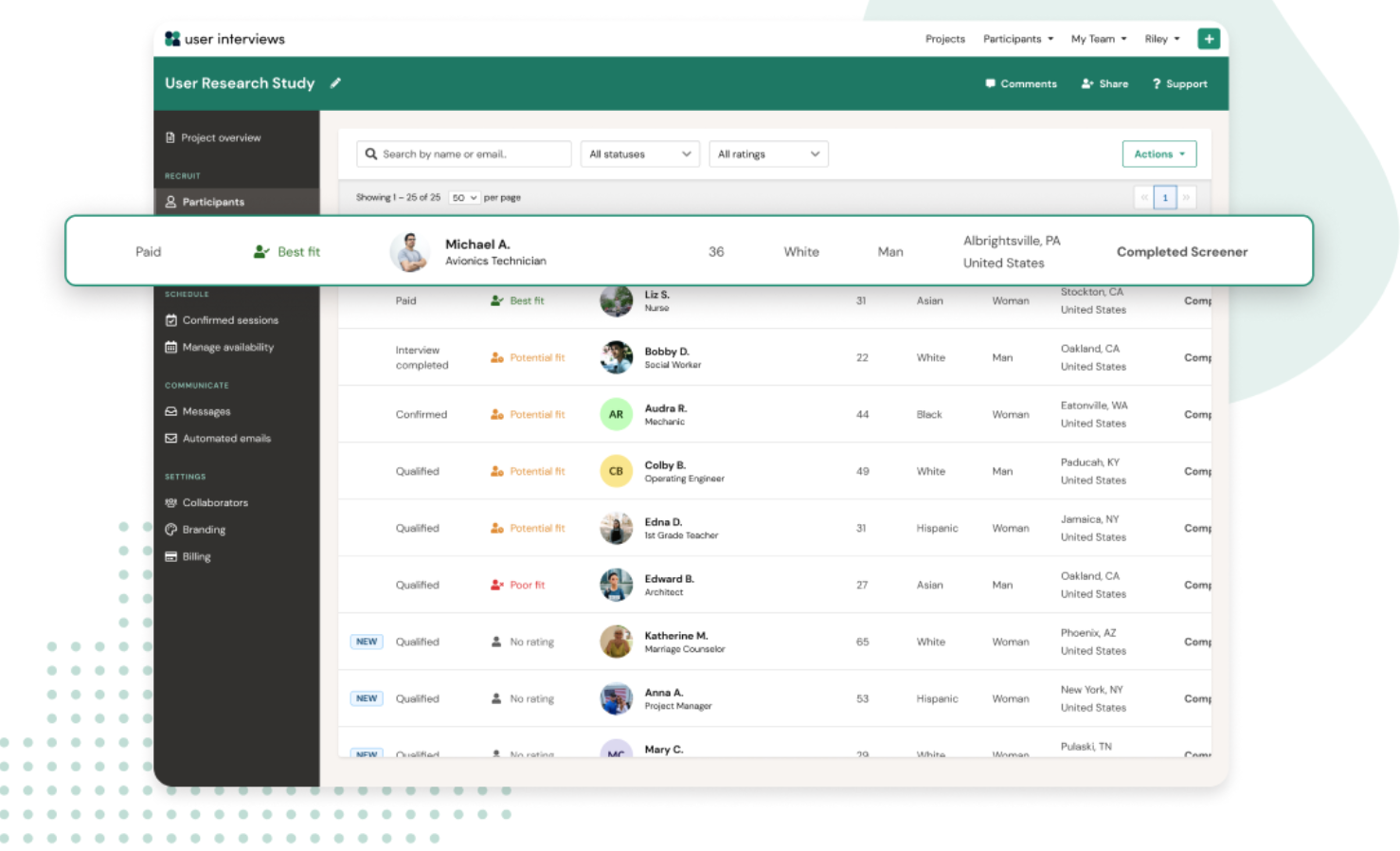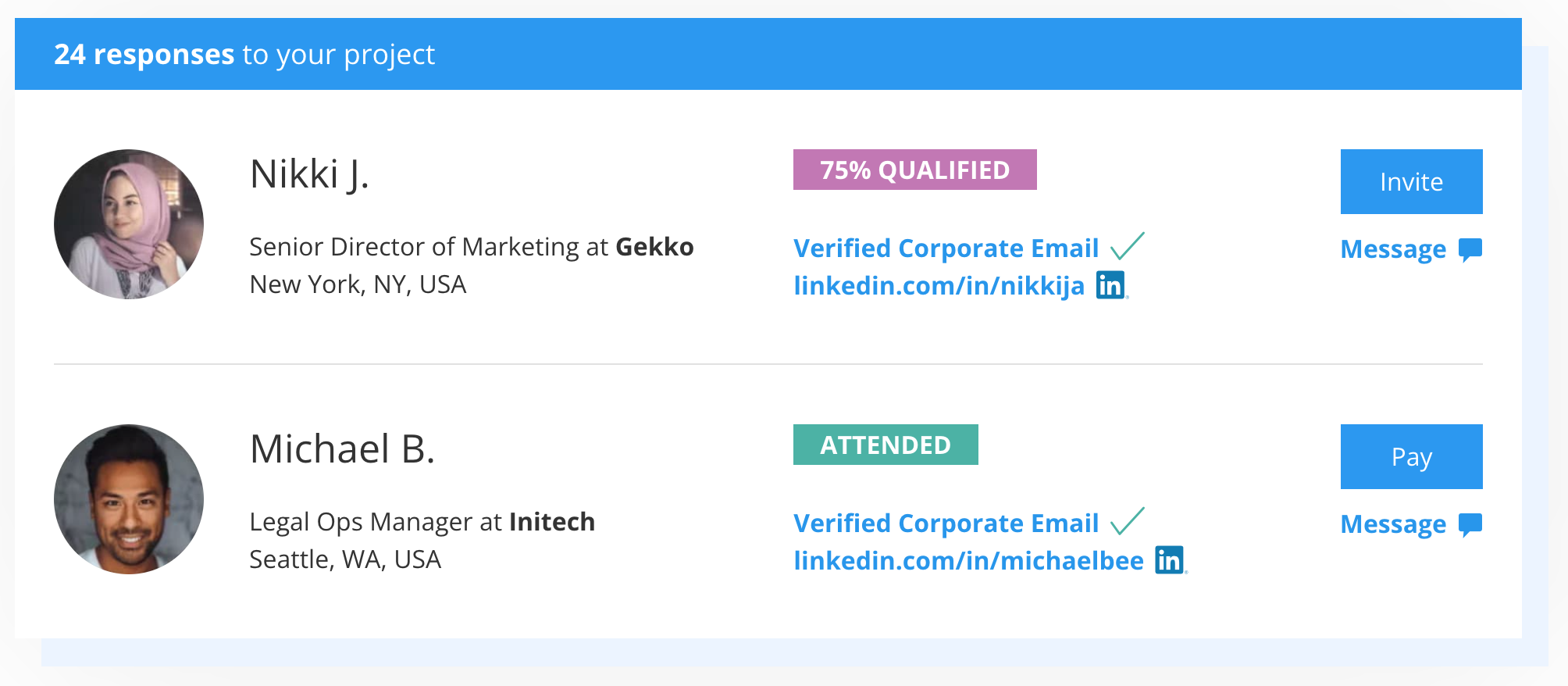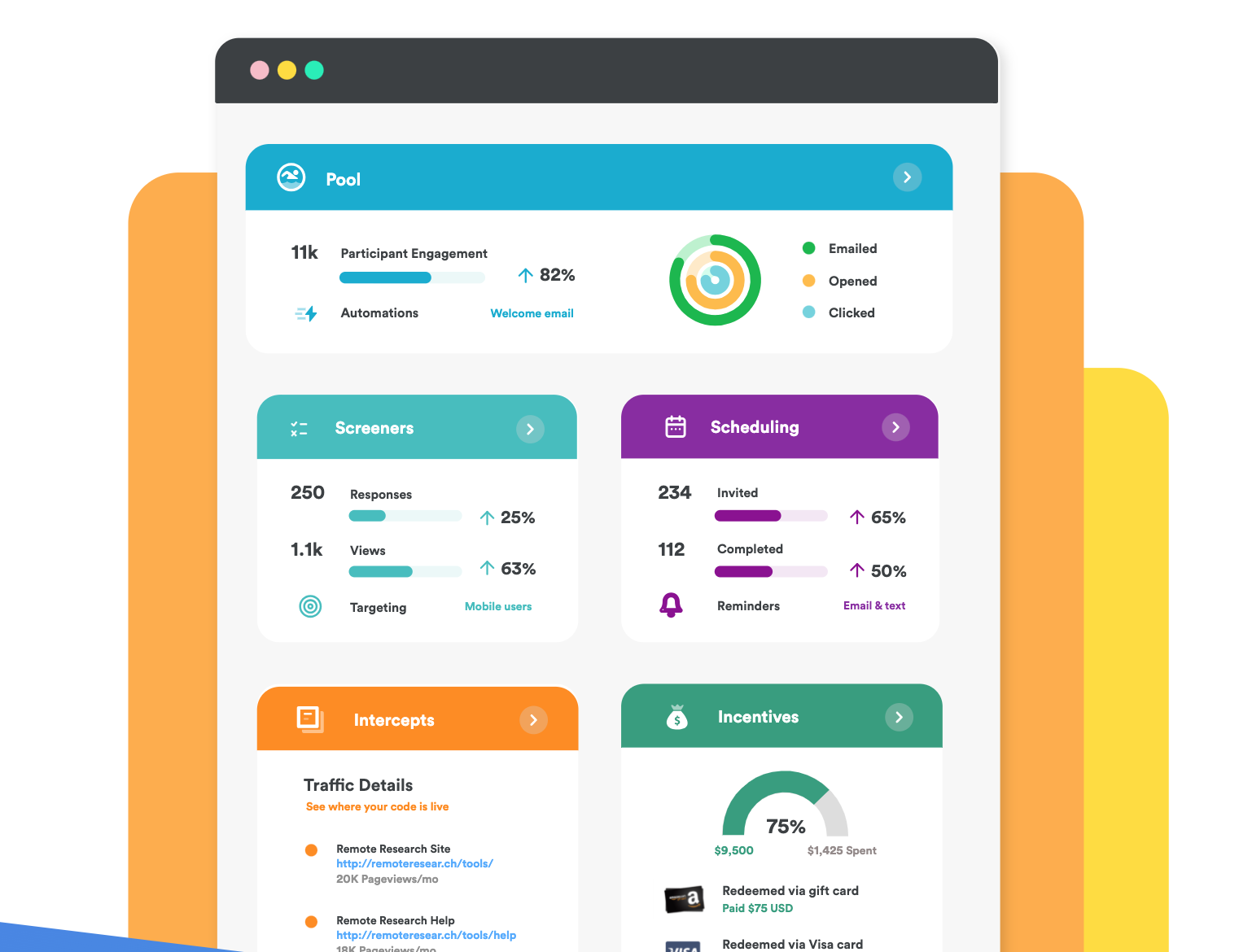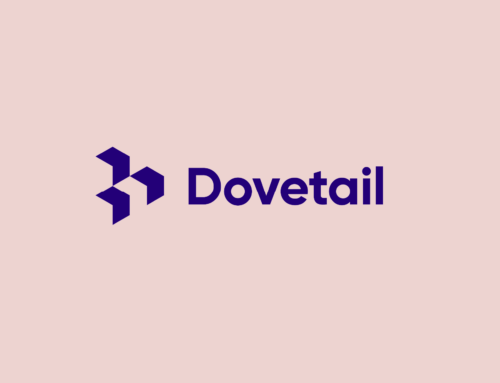
One of the most important aspects of user research is recruiting the right participants pertaining to your study at hand. If you are not speaking to users that fit your screening criteria, then the feedback that you receive may be flawed or not even relevant to your goals and product at hand. This is one the most important steps in your research process to deem accurate and useful insights. A step that seems obvious but that actually gets overlooked sometimes due to time, budgets and just lack of understanding the significance.
There are some user research tool suites that offer in-product user recruitment, however if you are not using a tool like usertesting.com, there are plenty of other stand alone user recruitment tools to check out! Some tools are free and some require a subscription, how you choose which one is right for you will depend on your specific needs and budget.
Top 3 tools to provide stand-alone recruitment support for your next study
1. User Interviews

User Interviews is one of the most popular user recruitment tools that allows you to find and invite users to participate in research studies. It has a large database of users who are willing to participate in research, and it offers a variety of features to help you find the right users for your study.
You can create custom survey screeners that outline your ideal participants and gather important data relating to their demographics. As well as schedule interviews, automate reminders and manage compensation.
It has one of the most user friendly interfaces and cohesive experiences, making it really easy to navigate and streamline your recruiting process from beginning to end. The analytics component is really valuable too, helping to support insight into participation engagement.
Pros:
- Comprehensive Platform: userinterviews.com offers a holistic solution, from participant recruitment to scheduling and compensation management.
- Custom Surveys: The tool allows you to create tailored surveys to target specific participant demographics and gather relevant data.
- Collaboration: userinterviews.com serves as a collaborative hub, facilitating communication and coordination among research teams.
- Analytics: The platform provides valuable analytics to assess participant engagement and optimize the research process.
- User-Friendly Interface: Its intuitive interface makes it easy for researchers to navigate and manage their projects effectively.
Cons:
- Pricing: The comprehensive features of userinterviews.com may come with a higher price point compared to some other tools.
- Learning Curve: While user-friendly, there might still be a learning curve for new users to fully utilize all the available features.
Feature Differences:
- Userinterviews.com stands out for its all-in-one platform approach, offering features from recruitment to scheduling and compensation management.
- The collaboration and team coordination features are particularly robust in userinterviews.com, making it suitable for larger research teams.
2. Respondent.io

From an AI user recruitment perspective Respondent.io stands out by using it to connect researchers with a vast network of potential participants. Its automation capabilities streamline the screening process, ensuring that only the most suitable candidates make the cut.
Pros:
- AI-Driven Automation: respondent.io leverages AI to automate participant recruitment, ensuring quicker and more efficient sourcing.
- Large Participant Pool: The tool connects researchers with a vast network of potential participants, increasing the chances of finding suitable candidates.
- Quick Turnaround: The automation and AI-driven screening process result in faster participant selection and recruitment.
- Efficiency: respondent.io streamlines the screening process, ensuring that only qualified candidates are considered.
Cons:
- Limited Customization: While efficient, respondent.io might have limitations in tailoring participant criteria to specific research needs.
- Less Focus on Collaboration: respondent.io’s strength lies in recruitment efficiency, but it might lack robust collaboration features.
Feature Differences:
- Respondent.io’s key differentiator is its AI-driven automation, which significantly accelerates the participant recruitment process.
- The platform’s primary emphasis is on efficient participant sourcing, making it ideal for researchers looking to quickly find suitable candidates.
3. Ethnio

Ethnio utilizes data to revolutionize participant recruitment by enabling you to identify participants who align with specific demographics, ensuring a diverse and representative sample. The targeting capabilities extend beyond basic survey criteria, allowing you to pinpoint users based on behaviors and preferences as well.
It’s data driven approach ensures a more inclusive approach grounded in providing diversity, leading to more meaningful and comprehensive insights.
Pros:
- Data-Driven Targeting: ethnio’s analytics-driven approach enables precise participant targeting based on demographics, behaviors, and preferences.
- Inclusivity: The tool promotes diversity and inclusivity by allowing researchers to target specific user groups effectively.
- Behavioral Targeting: ethnio’s focus on behavioral criteria enables researchers to connect with users who exhibit specific actions or habits.
Cons:
- Learning Curve: ethnio’s analytics-driven approach might require some learning to fully utilize the targeting features effectively.
- Complexity: The sophisticated targeting capabilities might be overwhelming for researchers looking for a simpler recruitment solution.
Feature Differences:
- Ethnio excels in data-driven targeting, allowing researchers to recruit participants based on specific behaviors and preferences.
- The tool’s emphasis on inclusivity and diversity makes it stand out for researchers who prioritize representative participant samples.
Factors to consider when choosing a user recruitment tool
- The type of users you need to recruit: Some tools are better at recruiting specific criteria, such as users who are novice vs experts in a particular field.
- The number of users you need to recruit: Some tools are better at recruiting large numbers of users, while others are better at recruiting small numbers of users.
- The features you need: Some tools offer a variety of features, such as the ability to post your study to a large pool of users or the ability to create surveys and usability tests.
- Your budget: Some tools are free, while others require a subscription.
No matter which tool you choose, it is important to test it out before you commit and use it for a major research study. This will help you make sure that the tool is a good fit for your needs and that it’s intuitive to use. From collaboration hubs to data-driven diversity and AI-driven efficiency, these tools encapsulate the evolution of user recruitment.






